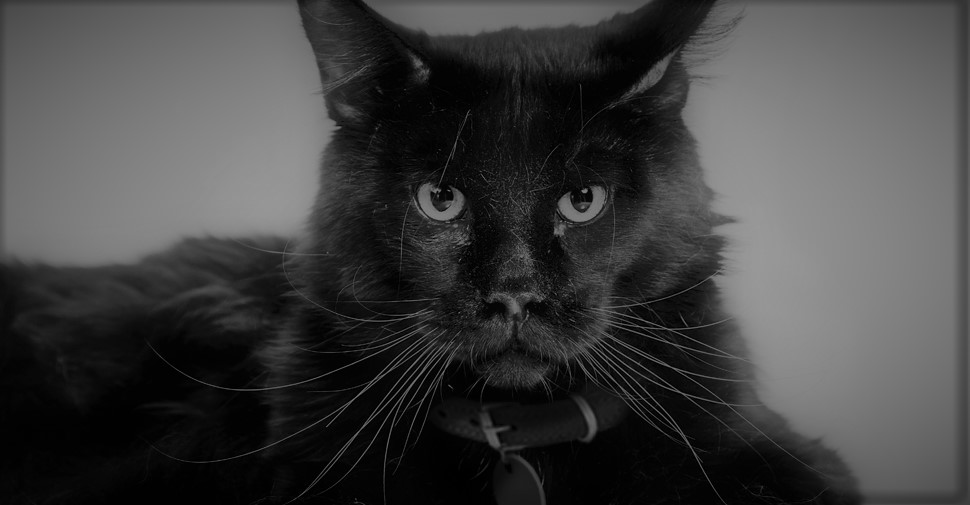
I recently wrote about Kelly, a cat who survived for eight days inside a mail sack on the RMS Aquitania in 1920. The following cat tale of Old New York is about Dan, the cat of Engine Company 40, who reportedly went for 33 days without food and drink in the ceiling of the firehouse.
Unlike Kelly, Dan did not have an extraordinary amount of extra lives. He did, however, have an extraordinary amount of extra pounds.
The Remarkable Tale of a Shrinking Cat
“This is a tale of a cat. Of a cat with a tail fourteen inches long. It is a true tale. It is vouched for by a fireman, a policeman and the appearance of the cat. A woman, a basket, a hole in a ceiling, a doctor and some medicine also figure into the tale.”—The New York World, January 5, 1894
Dan was a three-year-old cat who once weighed 48 pounds. (I find this hard to believe, but The World says the story is true…). Within a six-week period, between Thanksgiving and New Year’s Day, the tubby tabby had shrunk down to eight pounds.

He was reportedly a beautiful cat, with glossy-black fur and bright yellow eyes. From the tip of his nose to the tip of his tail, he measured 33 inches—basically just short of three feet. I’m not sure how wide he was, but at 48 pounds, he must have been a tank.
According to the tale, Dan was raised by a kind woman who doted on the cat. Sadly, just before Thanksgiving Day in 1893, the woman found out that she had to move from her comfortable home.
There was no room for Dan in her new tiny apartment (I’m not sure if any small apartment in New York City could accommodate a 48-pound cat!). So poor Dan was alone and homeless.
Now, the woman knew that human vagrants were reported to the police station. So, she went to the 24th Police Precinct station house at 150 West 68th Street to report Dan’s dilemma.
As Sergeant Townsend listened to her woeful tale, he looked out the window and scratched his head. Across the street he saw Assistant Foreman Francis Casey looking out a window in the the newly constructed firehouse for Engine Company 40. That gave the wise sergeant an idea.
Sergeant Townsend invited Foreman Casey to come over for a visit. He then presented Dan to the foreman as a housewarming gift in honor of the new firehouse.
Foreman Casey was a 61-year-old veteran. He joined the fire department as a volunteer when he was 25 years old in 1858 and was made foreman of the new Engine Company 40 in December 1874. Having worked as a foreman for 20 years, Francis no doubt had a lot of experience with firehouse cats.

Dan immediately began purring in the fireman’s ear when Francis bent down to pet him. Trusting that her cat was in safe hands, the woman wiped a few tears from her eyes and walked away.
Well, what happened then is one for the books.
The trouble began when Francis picked Dan up. The cat dug his claws into Francis’ hair, sending the fireman into a full-blown panic. He ran across the street and into the firehouse. Dan clung on tight.
Inside the new firehouse, a carpenter was working on the wood ceiling. He was making a hole for a new steam pipe. He had just taken a three-foot board down when Francis ran into the firehouse, waving his arms frantically over his head.
Yep. You can guess what happened next.
Suddenly, a second alarm for fire sounded. “The gong ranged and clanged. The horses pawed and jumped. Men rushed to and fro shouting and yelling.”

Francis sprang to take charge of the engine. Dan sprang for the hole in the ceiling. The engine pulled out, the doors closed, and Francis didn’t see his new cat for a long time.
Four hours later, when the men returned to the firehouse, Francis searched for Dan. The 48-pound cat was nowhere to be found.
The next day, the carpenter and a machinist finished installing the steam pipe. Then they closed up the hole in the ceiling. Dan was apparently taking a long cat nap, and had no idea his fate was also being sealed.
Four weeks and five days passed with no sight of Dan. These were very long and hard days for Dan. As The World reporter noted, he suffered one day for every inch of his length.
Luckily for Dan, the steam pipe did not work properly. The men were also hearing strange noises between the first and second floors. Some of the more superstitious firemen thought the eerie cries they heard were coming from a ghost and that the new firehouse was haunted.
The carpenter and machinist were called in to remove the faulty steam pipe. They left the hole in the ceiling open.
On Christmas Eve, Francis and Fireman Reynolds were standing on the first floor, directly under the hole. Suddenly, they heard a strange noise, as if a human baby were crying out in distress. They looked up and saw two bright balls of fire glowing back at them.
“It’s a ghost!” Reynolds shouted. “I knew the house was haunted.”
“Meow,” cried Dan in response.
“Worse than ghosts!” Francis said. “It’s Dan the cat!”
While the men spoke, Dan began squeezing and wriggling himself out of the ceiling hole. The men were shocked when the tiny cat fell to the floor. As the news reporter noted:
Yes, it was Dan. But, oh! how he changed! The glossy coat was ragged rough; the bright eyes were dim and glassy. Forty of the forty-eight pounds had gone. The ribs stood out like stripes on a zebra.”
Francis carried Dan up to his cot and called for Dr. Milligan. The doctor felt for the cat’s pulse, which was very weak, and put his ear up to his heart. Then he fed him six drops of milk and brandy.
The milk and brandy treatment continued for five more days in increasing doses. Little by little, the now little cat got better. By New Year’s Eve, he was able to drink some tea from a cup.
While Dan convalesced on the cot, the other pets of Engine Company 40–two all-white cats named Nell and Pete–stood guard. They gently licked his coat and helped nurse him back to health. Somehow they knew that Dan was in bad shape.

Gloom Pervades at Engine Company 40
On January 20, The World reporter returned to the Engine Company 40 firehouse to check on Dan. The men told him that he had had a relapse and taken a turn for the worse.
According to Francis, he had found the cat lying unconscious in the cellar on the morning before. He immediately called for Dr. Milligan.
Dr. Milligan said Dan had suffered from a fainting fit. He put some ammonia on a sponge and held it up to the cat’s nose. Dan shivered, wiggled his tail, and opened his eyes.
“Saved again!” Francis exclaimed.
The doctor advised Francis to keep the cat in his bed for a while and away from any drafts. The next day, Dan was sleeping peacefully on the cot with his right paw resting on the tip of his nose.
It was reported that Dan, the shrinking cat of Engine Company 40, was expected to fully recover.
A Brief History of Engine Company No. 40

The interesting history of Engine Company No 40 dates back to July 29, 1874, when the company was first organized under the Metropolitan Fire Department. Their first quarters, albeit, a very temporary home (about 3 days), was quite unusual: The Empire City Skating Rink, between Second and Third Avenues and East 62nd and 63rd Streets.
Opened in November 1868, the innovative structure featured arched cast-iron construction and boasted “the largest clear span in America.” The block-long rink was 350 feet in length, 170 feet wide, and 70 feet high. It’s ground floor had a raised platform for spectators, accommodating an audience of 10,000 persons.”
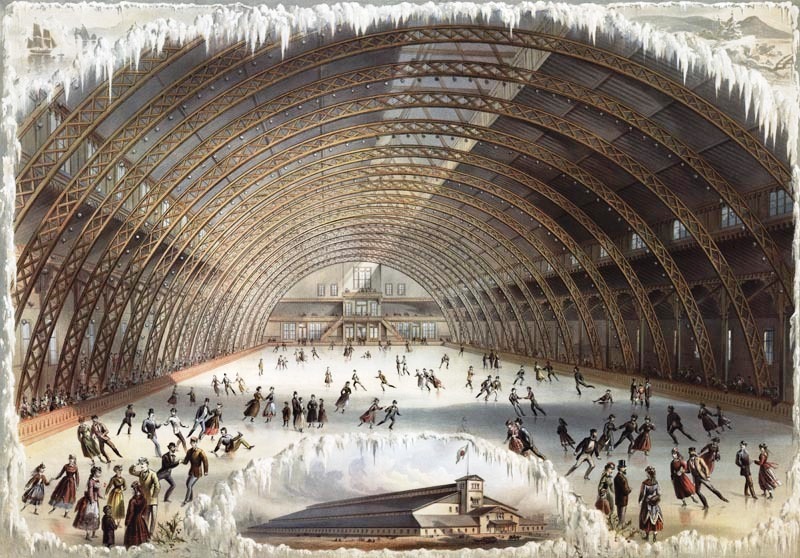
I was not able to find any additional details on how the large skating rink served as a temporary home for the fire company. Where did the men put their truck? Where did they sleep? Where did they keep the horses? So many questions left unanswered!
Engine Company 40 Moves to Harsenville
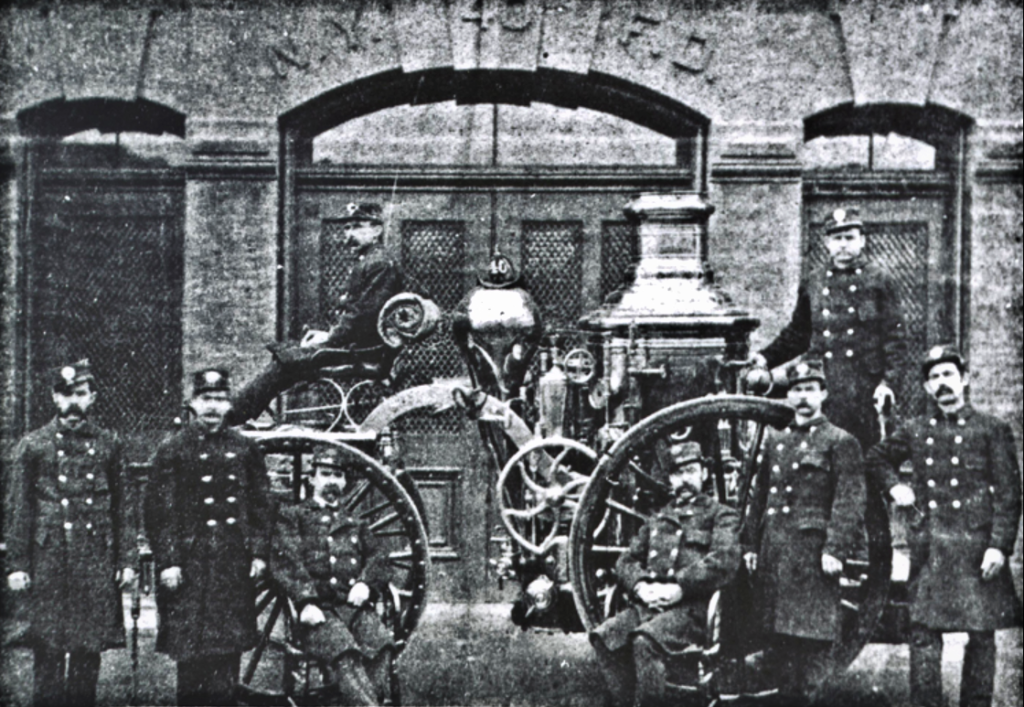
On August 4, 1874, the men of Engine Company No. 40 moved from the skating rink to an existing firehouse (formerly home to Engine Company No. 23) at 153 West 68th Street. During the 1700s and 1800s, this rural region of Manhattan was known as Harsenville.
The village was named for Jacobus (Jacob) Harsen (1750-1835), eldest son of Johannas Harsen and Rachel Dyckman Harsen. Jacob Harsen was active in New York City’s political life, serving as both alderman and city magistrate. He was also a ruling elder of the Reformed Dutch Church, which was just down the street from the firehouse near Broadway.
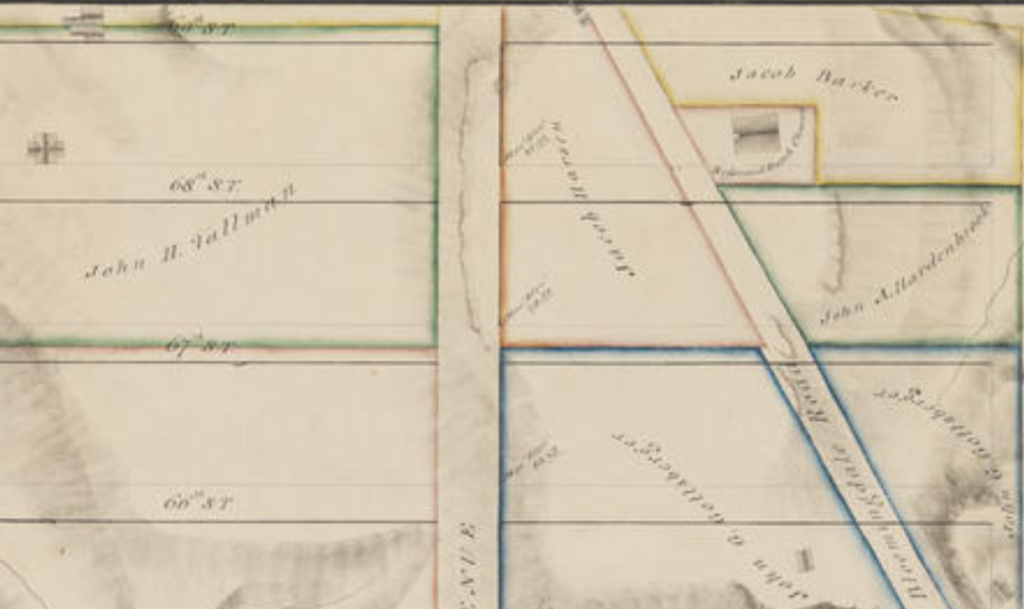
The following photo and illustrations demonstrate just how rural this part of Manhattan was in the 1800s.

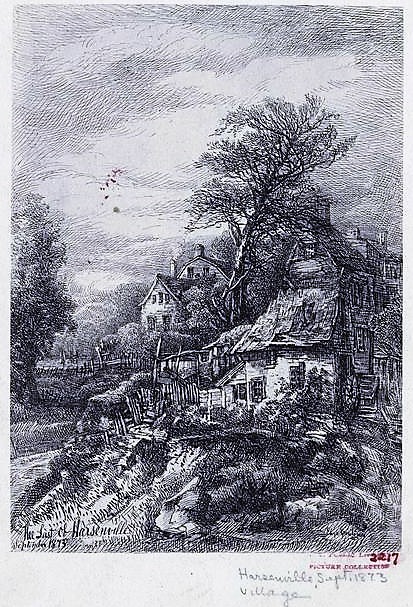
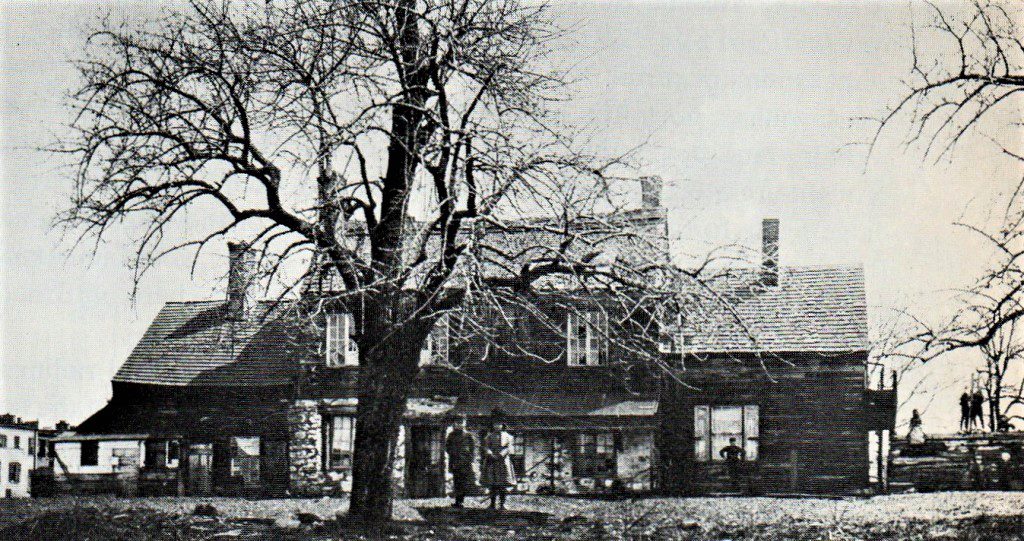
In September 1892, Engine Company 40 moved into a temporary structure that the city erected on a leased lot at 232 West 68th Street. They remained there for one year while a new firehouse was constructed on the site of their old home at 153 West 68th Street. The men moved into their new home on September 9, 1893.
Three months later, Dan the cat entered the new firehouse weighing 48 pounds.

In May 1918, Engine Company No. 40 moved in with Hook and Ladder Company 35 at 142 West 63rd Street. Their old firehouse then served as headquarters for the city’s Fire Auxiliary Corps, which was formed to augment the uniformed force in the event New York City was attacked during the war years.
In the 1920s, the building was home to the New York Fire College, founded in 1911 by FDNY Chief John Kenlon. At the time, the college was the only institution of its kind in the world, with classes offered on all phases of fire prevention and extinguishment.


On November 6, 1961, together with Ladder Company 35, Engine Company No. 40 moved one last time to a new firehouse at 131 Amsterdam Avenue, in the heart of Lincoln Center. Incidentally, a month later, filming began on West Side Story just one block west of the old West 68th Street firehouse.
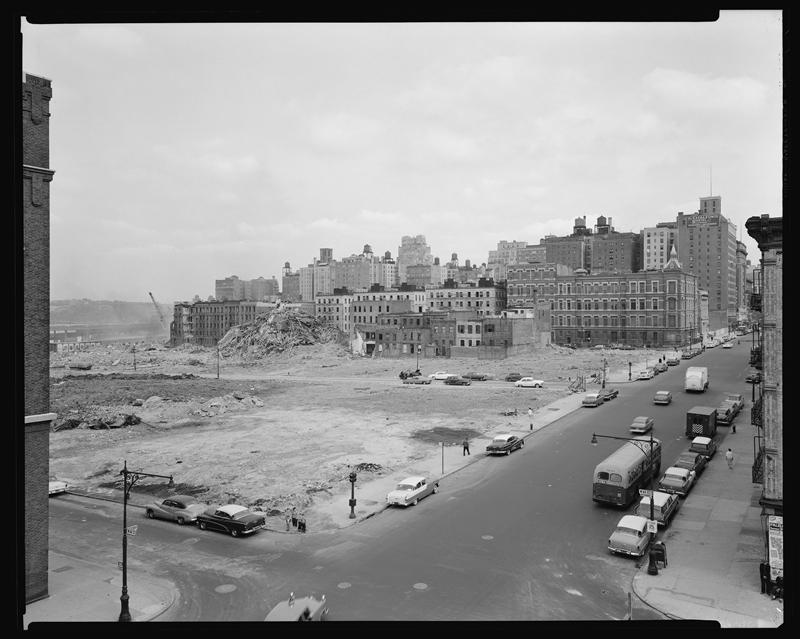
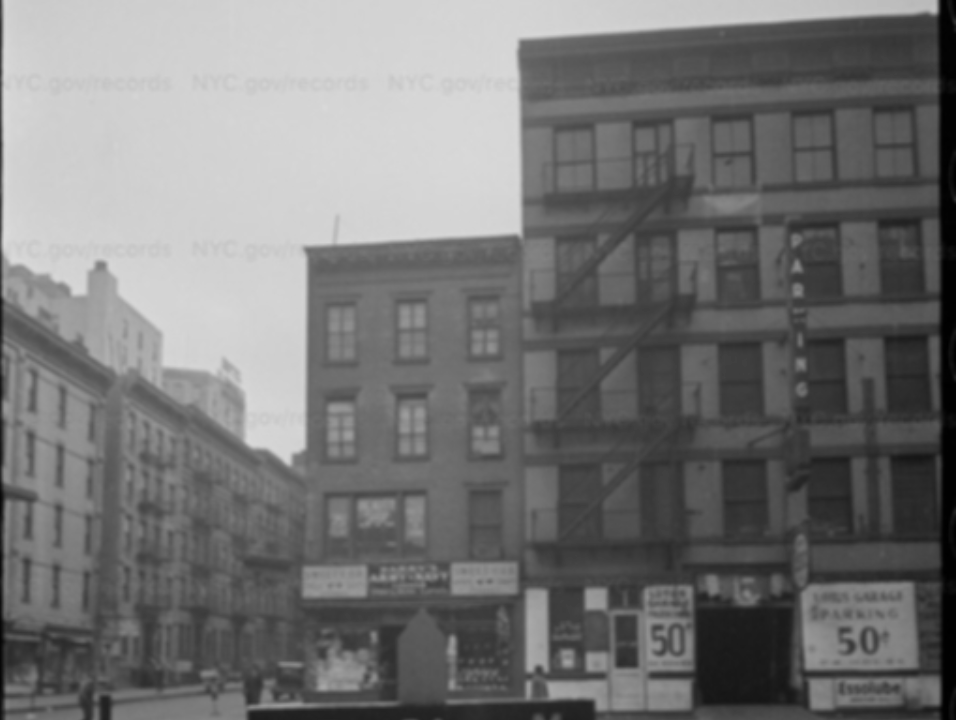
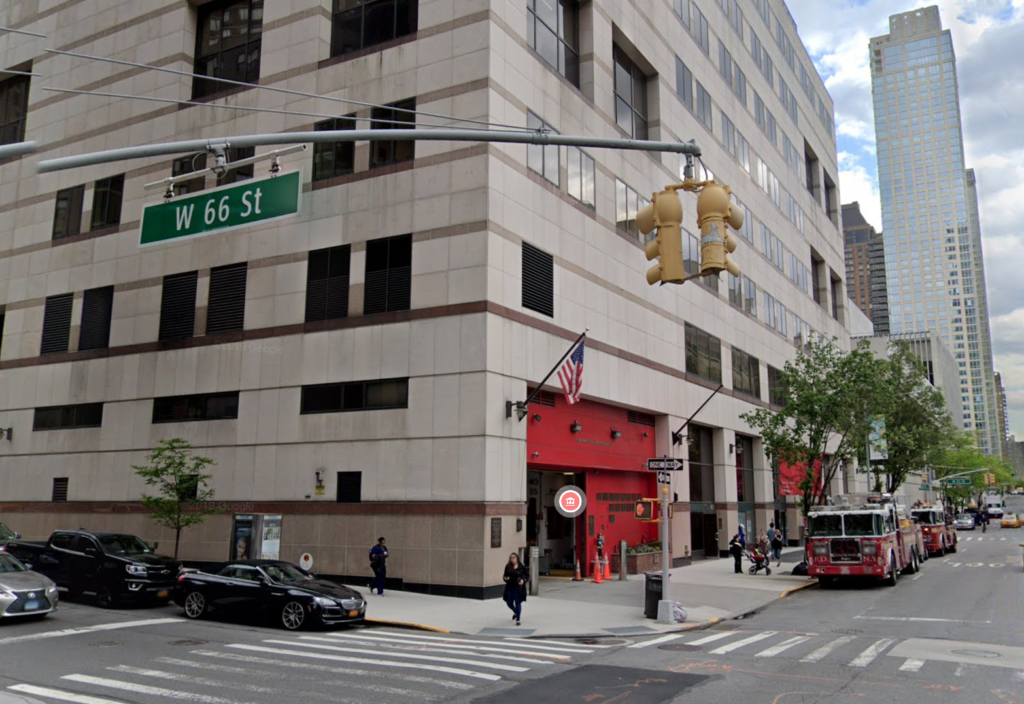
The old firehouse on West 68th Street, along with all its neighboring buildings, was eventually demolished to make way for the Dorchester Towers, a 34-story residential building constructed in 1964.





another heart warming tale of Dan the cat! Please do keep them coming- they made my day! So happy to see upbeat endings!
Thanks again.
Glad you enjoyed it!